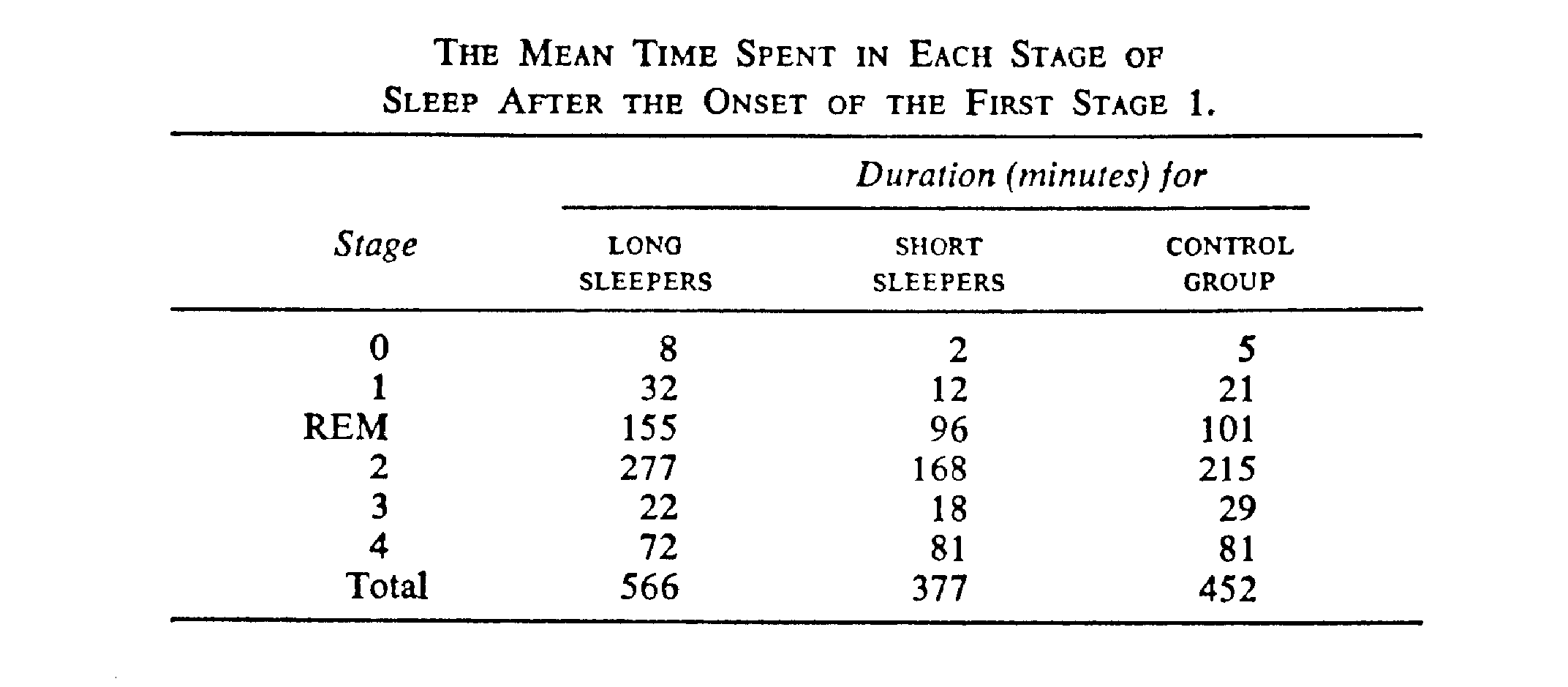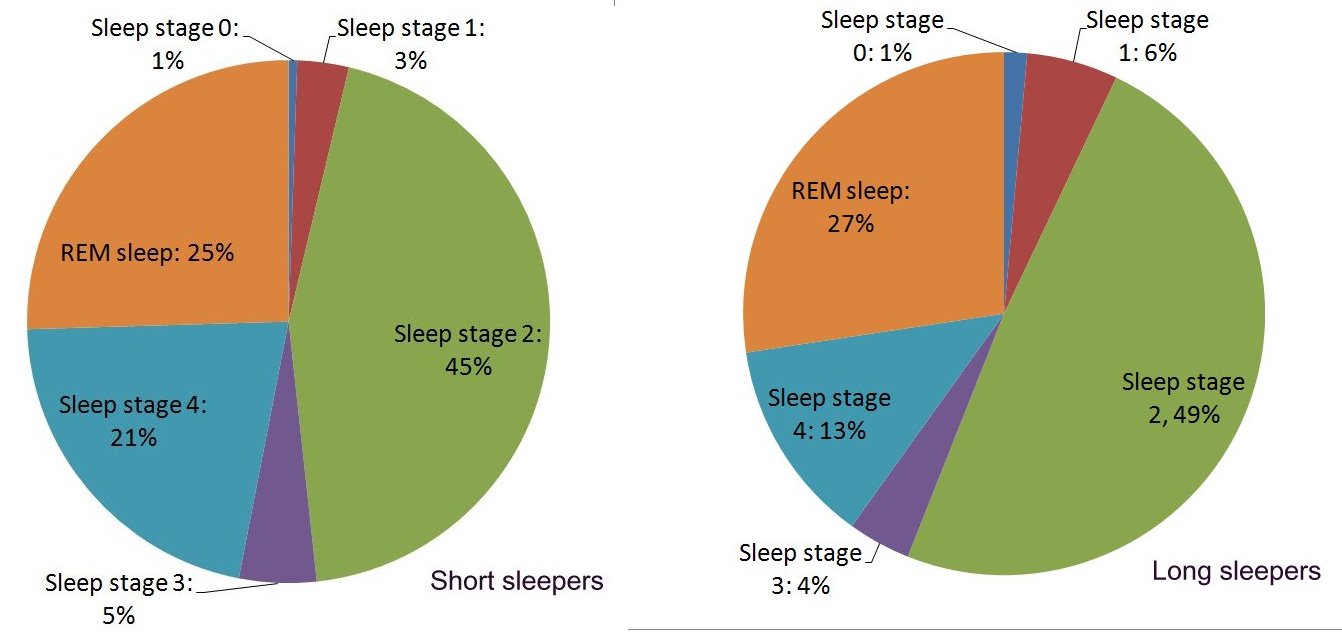Time spent sleeping
The amount of time one sleeps as well as the amount devoted to REM phases during a night seems to depend on age, as seen in the following graph:

The graph shows changes (with age) in total amounts of daily sleep, daily REM sleep, and in percentage of REM sleep. Note the sharp diminution of REM sleep in the early years. REM sleep falls from 8 hours at birth to less than 1 hour in old age. The amount of NREM sleep throughout life remains more constant, falling from 8 hours to 5 hours. In contrast to the steep decline of REM sleep, the quantity of NREM sleep is undiminished for many years. Although total daily REM sleep falls steadily during life, the percentage rises slightly in adolescence and early adulthood. This rise does not reflect an increase in amount; it is due to the fact that REM sleep does not diminish as quickly as total sleep, Work in progress in several laboratories indicates that the percentage of REM sleep-in the 50- to 85-year group may be somewhat higher than represented here (Roffwarg et al., 1966, p. 608).
The amount of time spent in the REM phase can also depend on how long a person sleeps, as seen the following table (Woods & Greenhouse, 1974, p. 290):

Previous section Next section List of sections List of chapters



